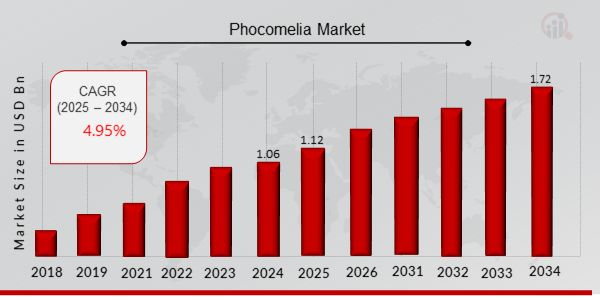You know, the world of medical care is constantly changing. Especially when we talk about rare conditions. Phocomelia, a complex limb difference, is seeing remarkable progress. I'm here to guide you through these advancements. Let's delve into what 2025 holds for this field. Expect innovations that will truly impact lives.

Stay updated on the latest trends in Phocomelia Market by exploring detailed market insights
Understanding Phocomelia: Evolving Diagnostic Approaches
Early detection is crucial. Improved imaging techniques are now available. These provide detailed limb visualization. Genetic testing is becoming more precise. It helps identify underlying causes. This allows for personalized care plans.
We're seeing a shift towards holistic patient care. This includes psychological and social support. It's not just about the physical aspects. We must address the whole person. This comprehensive approach improves patient outcomes.
Phocomelia 2025: Breakthroughs in Treatment and Support
Treatment options are expanding rapidly. Surgical interventions are becoming less invasive. Regenerative medicine is showing promise. This could lead to functional limb growth. New therapies are emerging. These focus on improved mobility and quality of life.
Support systems are also becoming more robust. Patient advocacy groups are more connected. Digital platforms provide resources and community. Telehealth services offer remote consultations. This increases accessibility to expert care.
Phocomelia 2025: Cutting-Edge Prosthetics and Assistive Technologies
Prosthetic technology is undergoing a revolution. 3D printing allows for custom-fitted devices. Myoelectric prosthetics are more intuitive. AI-powered systems are enhancing control and functionality. They adapt to the user’s needs. This improves daily living.
Assistive technologies are also advancing. Exoskeletons provide enhanced strength. Virtual reality (VR) is used for therapy. This helps with rehabilitation and motor skill development. These innovations are transforming patient independence.
Phocomelia 2025: Advancing Limb Difference Care Through AI and Data
Artificial intelligence is transforming patient care. AI algorithms analyze vast datasets. This helps predict treatment outcomes. It guides personalized interventions. Machine learning is streamlining prosthetic design. This optimizes fit and function. Data analytics are improving clinical trials. This accelerates the development of new therapies.
- AI is enabling predictive analytics.
- Machine learning is optimizing prosthetic design.
- Data analytics are improving clinical trials.
- These tools enhance patient care.
Phocomelia 2025: Regulatory Changes and Sustainability
Regulatory bodies are adapting to new technologies. They are ensuring safety and efficacy. This is crucial for patient protection. Sustainable practices are gaining importance. Materials are becoming more eco-friendly. Manufacturing processes are reducing waste. This aligns with global sustainability goals.
Here's a comparison table showcasing some key advancements:
| Feature | Current State | 2025 Advancements | Impact |
|---|---|---|---|
| Prosthetics | Standardized designs | Custom 3D-printed, AI-powered | Improved comfort, functionality |
| Treatment | Surgical interventions, therapy | Regenerative medicine, targeted therapies | Enhanced limb function, better outcomes |
| Support | Patient groups, limited digital resources | Robust telehealth, digital communities | Increased access, stronger support |
| Diagnostics | Traditional imaging, genetic testing | Advanced imaging, precise genetic analysis | Earlier detection, personalized care |
Living with Phocomelia in 2025: Empowering Patient Lives
Patient empowerment is a key focus. Education and resources are widely available. Support networks are stronger than ever. Peer mentorship programs provide guidance. This fosters a sense of community. Accessibility is improving in public spaces. This ensures inclusivity for all.
We're seeing a shift toward patient-centered care. This includes shared decision-making. It respects individual needs and preferences. This approach improves overall well-being.
Conclusion:
The landscape of phocomelia care is evolving rapidly. Advancements in treatment, prosthetics, and support are transforming lives. These innovations are driven by technology and research. As healthcare professionals, you play a vital role. Staying informed and embracing these changes is essential. This ensures we provide the best possible care.



